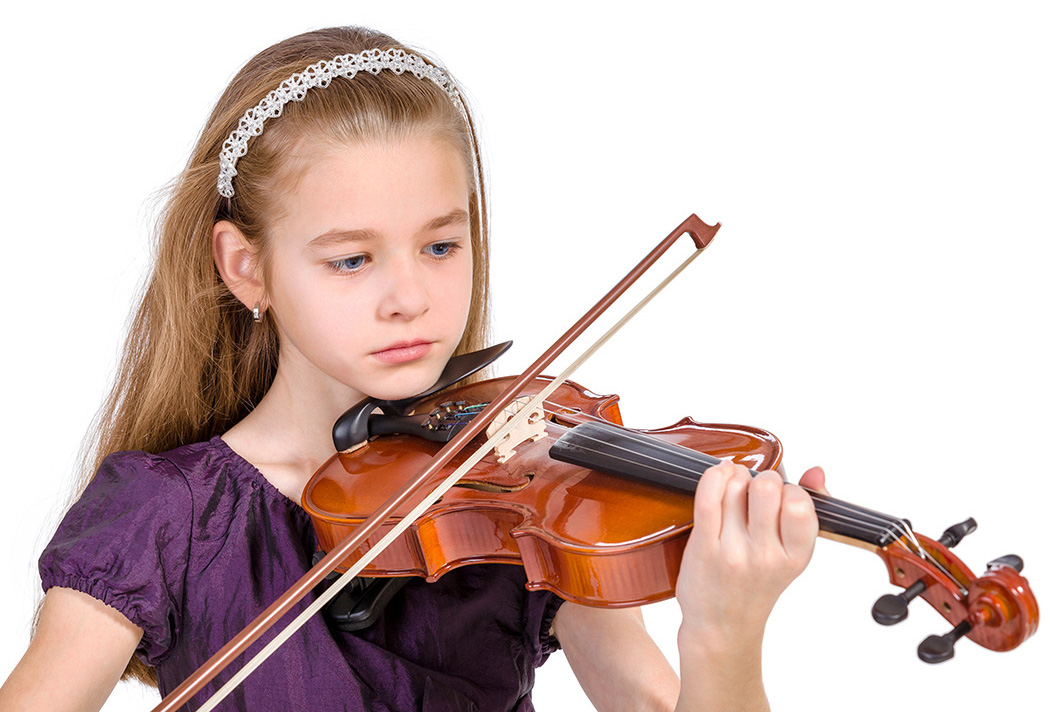The violin is played either seated or standing up. Solo players (whether playing alone, with a piano or with an orchestra) play mostly standing up. In contrast, in the orchestra and in chamber music it is usually played seated. In the 2000s and 2010s, some orchestras performing Baroque music have had all of their violins and violas, solo and ensemble, perform standing up.
The standard way of holding the violin is with the left side of the jaw resting on the chinrest of the violin, and supported by the left shoulder, often assisted by a shoulder rest (or a sponge and an elastic band for younger players who struggle with shoulder rests). The jaw and the shoulder must hold the violin firmly enough to allow it to remain stable when the left hand goes from a high position (a high pitched note far up on the fingerboard) to a low one (nearer to the pegbox). In the Indian posture, the stability of the violin is guaranteed by its scroll resting on the side of the foot.

While teachers point out the vital importance of good posture both for the sake of the quality of the playing and to reduce the chance of repetitive strain injury, advice as to what good posture is and how to achieve it differs in details. However, all insist on the importance of a natural relaxed position without tension or rigidity. Things which are almost universally recommended are keeping the left wrist straight (or very nearly so) to allow the fingers of the left hand to move freely and to reduce the chance of injury and keeping either shoulder in a natural relaxed position and avoiding raising either of them in an exaggerated manner. This, like any other unwarranted tension, would limit freedom of motion, and increase the risk of injury.
Hunching can hamper good playing because it throws the body off balance and makes the shoulders rise. Another sign that comes from unhealthy tension is pain in the left hand, which indicates too much pressure when holding the violin.
바이올린의 음색 스타일은 크게 남성, 여성 및 온건의 세 가지 범주로 분류할 수 있습니다. 남성적인 톤 스타일은 대담하고 깊고 활기차고 고상하여 사람들에게 고양감을 주고, 여성적인 톤 스타일은 미묘하고 우아하며 섬세하고 부드러우며 사람들에게 신비롭고 먼 느낌을 주고 봄바람을 느끼게 한다. 다른 연주자와 다른 재료의 바이올린은 음색이 다르며 바이올린이 연주하는 음색은 종종 연주자의 연주 스타일과 기술 수준을 명확하게 반영할 수 있습니다.
- 빠른 16분음표로 G현과 E현이 번갈아 가며 들리는 음색은 마치 전장에서 전사들이 잇달아 싸우는 장면과도 같다.